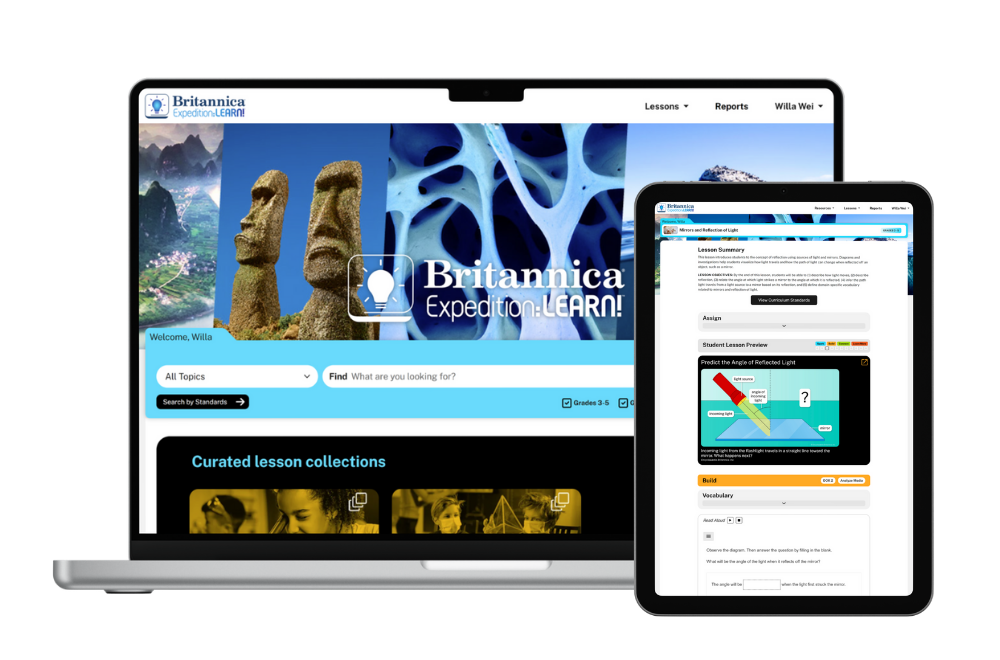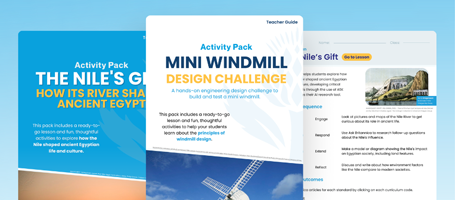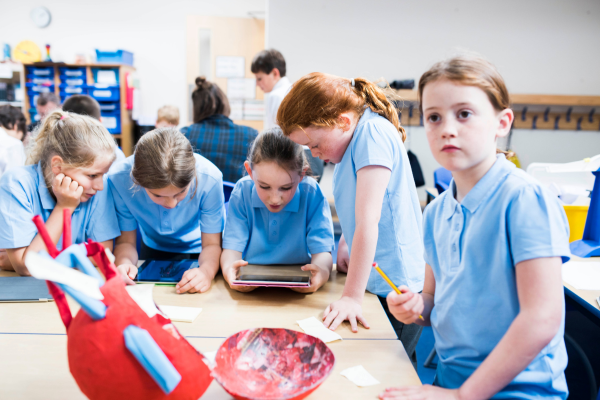Curiosity in science matters, but without explicit instruction to lay the groundwork, inquiry can leave students guessing.
Science education should ignite curiosity, foster critical thinking, and equip students with the ability to explore and experiment. However, current classroom practices often jump straight into inquiry-based learning (IBL) and project-based learning (PBL) without providing students with the essential foundation they need to engage meaningfully. This approach, while engaging, can leave students feeling lost, struggling to make sense of their observations, and ultimately limiting their ability to apply scientific concepts effectively.
Research in neuroscience and cognitive science supports a different approach — one that prioritises explicit instruction before exploration. Britannica Science – Expedition: Learn! is designed to bridge this gap, offering structured, scaffolded lessons that help students build foundational knowledge before they engage in practical investigations.
The Science of Learning: Why Knowledge Comes Before Exploration
Students learn best when they first develop a strong knowledge base and then apply that knowledge in an exploratory setting. This is not a matter of opinion — it is a principle backed by cognitive science and neuroscience research.
A report by the Australian Education Research Organization (AERO) states that “learning is a change in long-term memory”, emphasising that new concepts must be securely stored in memory before they can be effectively applied (AERO, 2023). This aligns with decades of research showing that students who receive explicit instruction before engaging in discovery-based tasks perform significantly better than those who attempt to learn purely through exploration (Kirschner, Sweller, & Clark, 2006).
By building a strong foundational understanding first, students are better equipped to:
- 1️⃣ Engage in meaningful inquiry, rather than just following procedures in an experiment.
- 2️⃣ Retrieve and apply knowledge more effectively in real-world settings.
- 3️⃣ Extend their learning, making deeper connections between new and prior knowledge.
This approach does not eliminate hands-on learning but rather enhances it by ensuring students have the cognitive tools they need before engaging in independent exploration.
Explicit Instruction: The Essential First Step in Science Learning
One of the biggest misconceptions in education is that explicit instruction stifles curiosity. In reality, it does the opposite — it provides students with the tools they need to explore concepts with greater depth, confidence, and independence.
Explicit instruction is a structured, step-by-step teaching approach where:
- ✅ New concepts are explicitly explained with clear explanations and guided practice.
- ✅ Students gradually take on more responsibility as they gain confidence and understanding.
- ✅ Key ideas are reinforced through retrieval practice, strengthening long-term retention.
A study published in the journal Neuroscience & Biobehavioral Reviews highlights that explicit instruction improves cognitive engagement by reducing cognitive overload and directing students’ attention to essential information (Sweller et al., 2024). This is particularly critical in primary science education, where many teachers lack specialised science backgrounds and need structured resources to support effective teaching.
How Britannica Science – Expedition: Learn! Supports Explicit Instruction

Britannica Science – Expedition: Learn! is designed to follow the principles of explicit instruction, ensuring that students:
- ✅ Acquire essential background knowledge before engaging in hands-on activities.
- ✅ Progress through scaffolded lessons, building understanding step by step.
- ✅ Strengthen learning through retrieval practice, reinforcing key concepts.
With full, structured lesson modules, Britannica Science provides:
- 💡 Step-by-step explanations of key science concepts, ensuring students build knowledge before exploring.
- 💻 Multimodal content like videos, diagrams, and interactive activities to enhance understanding.
- 🧬 Self-guided lessons that students can complete independently, whether at home or in class rotations.
- 🧪 Seamless integration with practical experiments, allowing students to apply knowledge in a meaningful way.
By incorporating Britannica Science before any practical lesson, students enter hands-on learning experiences with confidence, equipped with the knowledge they need to analyse, question, and explore.
The Neuroscience of Retrieval Practice: Strengthening Learning for Long-Term Success
Building foundational knowledge is only the first step. To ensure students retain what they learn, educators must incorporate retrieval practice — the act of recalling information multiple times over spaced intervals.
So why does retrieval matter?
Each time a student retrieves a concept, they strengthen the neural pathways associated with it, making future recall easier. In addition, spaced repetition improves retention, ensuring knowledge is stored in long-term memory. Finally, applying retrieved knowledge in new contexts deepens understanding, preparing students for higher-order thinking.
Britannica Science supports retrieval practice by:
- ✅ Embedding quizzes and knowledge checks throughout lessons.
- ✅ Providing clear explanations that students can revisit over time.
- ✅ Encouraging students to apply retrieved concepts in hands-on experiments, reinforcing long-term learning.
The Pitfall of Jumping Straight into Inquiry-Based Learning (IBL) and Project-Based Learning (PBL)
While inquiry-based and project-based learning are valuable tools, they should not be the starting point of instruction. Without explicit instruction and retrieval practice beforehand, these methods can lead to:
- ❌ Students feeling lost, unsure of what they’re trying to achieve in an experiment.
- ❌ Cognitive overload, making it difficult to retain new information.
- ❌ Missed opportunities for deeper learning, as students focus on procedural steps rather than scientific concepts.
When IBL and PBL are preceded by explicit instruction, they become highly effective because students have the background knowledge to think critically, ask meaningful questions, and extend their learning.
This is why Britannica Science should be used BEFORE any hands-on investigation — so students can approach experiments with the right cognitive tools to fully engage with the learning process.
Building a Smarter Approach to Science Education
Science education is not just about experimenting — it’s about understanding. To truly decode science learning, we must ensure that students build foundational knowledge through explicit instruction before they engage in hands-on exploration.
Britannica Science – Expedition: Learn! offers plug-and-play, research-backed lesson modules that help students learn before they explore, boost teacher confidence and reduce prep time with structured, high-quality resources, and builds a strong foundation upon which every learner can access a quality science education.
By prioritising explicit instruction, retrieval practice, and scaffolded learning, we can transform how students engage with science — equipping them with the knowledge and confidence to become the next generation of innovators and problem-solvers.
More Educator Resources
Sign up with your email for more free resources from Britannica.

 By
By 